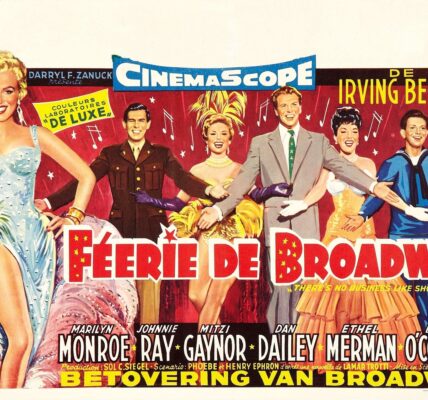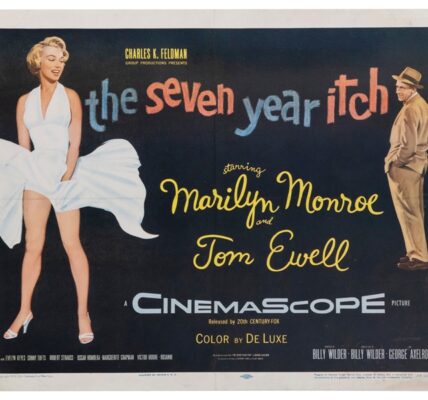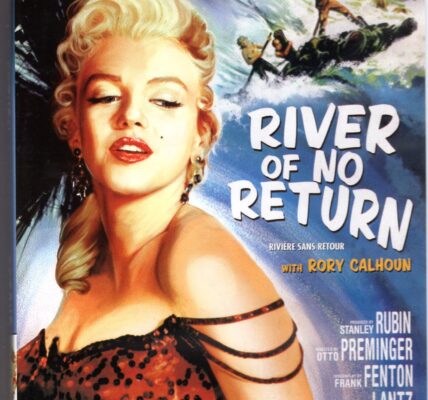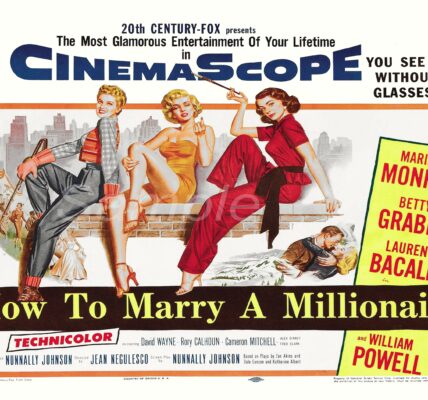“The Prince and the Showgirl” (1957) is a romantic comedy film directed by Laurence Olivier, featuring Marilyn Monroe in a role that showcases her charm and comedic talent. Based on Terence Rattigan’s play “The Sleeping Prince,” the film explores themes of love, ambition, and the contrasts between royalty and show business.
Film Details:
- Title: The Prince and the Showgirl
- Release Year: 1957
- Genre: Romantic Comedy
- Director: Laurence Olivier
- Screenplay: Terence Rattigan (based on his play)
- Cinematography: Oswald Morris
- Production Company: Warner Bros.
- Runtime: 117 minutes

Main Cast:
- Marilyn Monroe as Elsie Marina
- Laurence Olivier as Prince Charles
- Sybil Thorndike as Madame Odet
- Jeremy Spenser as The Prince’s Aide
- Richard Wattis as Sir Bingham

Plot Summary:
Set in London during the post-World War II era, the story revolves around Elsie Marina (Monroe), an American showgirl who finds herself entangled with the charming yet conflicted Prince Charles (Olivier) during his visit to England. Elsie is an ambitious performer, and when she is invited to perform in a theater production, she captures the attention of the prince, who is struggling with his royal duties and personal insecurities.
As the two characters interact, a romantic tension develops, highlighting the differences between their worlds. Elsie embodies the spirit of freedom and ambition typical of show business, while the prince grapples with the expectations of his royal status and the responsibilities that come with it. Their relationship is both playful and poignant, offering a glimpse into the complexities of love across societal boundaries.

Marilyn Monroe’s Role:
Monroe’s portrayal of Elsie is vibrant and captivating, allowing her to showcase her comedic timing and musical abilities. The character is depicted as a savvy and determined woman who navigates the challenges of show business while also being drawn to the allure of royalty. Monroe’s chemistry with Olivier is palpable, and she brings a sense of warmth and charm to the role, making Elsie a memorable character in her filmography.

Themes:
- Love Across Social Classes : The film explores the dynamics of romance between individuals from different backgrounds, emphasizing the challenges and misunderstandings that arise.
- Ambition vs. Duty: Elsie’s ambition as a performer contrasts with the prince’s obligations, raising questions about personal desires versus societal expectations.
- The Nature of Fame: The film delves into the complexities of fame, highlighting how public personas can differ from private realities.

Reception:
“The Prince and the Showgirl” received mixed reviews upon its release, with critics divided on the film’s tone and execution. However, Monroe’s performance was widely praised, with many noting her ability to hold her own against Olivier’s established presence. The film has since been reevaluated and is considered a significant entry in Monroe’s career, illustrating her range as an actress.

Legacy:
The film remains notable for its exploration of the intersection between royalty and show business, with Monroe’s performance leaving a lasting impression on audiences. “The Prince and the Showgirl” also represents a unique collaboration between Monroe and Olivier, who served not only as director but also as co-star, creating a dynamic on-screen presence that has endured in film history.

Fun Fact:
“The Prince and the Showgirl” was notable for its production challenges, particularly the working relationship between Monroe and Olivier. During filming, Monroe was known to be late to the set, which frustrated Olivier, who was a stickler for punctuality. Despite these challenges, their collaboration resulted in a film that showcased Monroe’s talent and Olivier’s directorial skills. The film features several musical numbers, including Monroe’s rendition of “The Show Must Go On,” highlighting her singing abilities and enhancing her character’s charm.
Watch movie:




